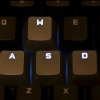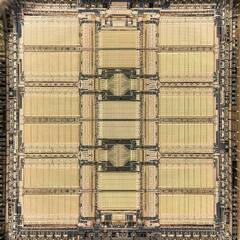-
Posts
4,103 -
Joined
-
Last visited
Reputation Activity
-
 johnt reacted to Motifator in JBL flip 6
johnt reacted to Motifator in JBL flip 6
For 100 bucks you can easily get a pair of actual studio monitors that will apply as proper speakers instead of that boombox, so no, don't.
-
 johnt reacted to Mark Kaine in Is the Scuf Controller any good?
johnt reacted to Mark Kaine in Is the Scuf Controller any good?
these controllers, no matter how expensive they are, are all trash build quality and won't last longer than 1-2 years. get it if you like the features, but don't expect longevity...
-
 johnt got a reaction from starsmine in HDR400 vs HDR10
johnt got a reaction from starsmine in HDR400 vs HDR10
HDR400 is a VESA standard for the expected peak brightness of a screen. It basically helps consumers figure out how "good" a panel is by a simple measurement of peak brightness in HDR mode. There is HDR400, HDR600, and HDR1000. The higher the number, usually the better the HDR experience. Before this, there was no standard method of determining brightness and comparing between displays. Manufacturers could report whatever they wanted in the brightness measurements. And technically they still can. But unstandardized testing would mean they cannot use the HDR400/600/1000 logos and advertise it. So if you do not see these logos advertised on a product, then the brightness claims might be determined in a different way that could bump up the numbers.
HDR10 is an HDR standard. It is not a measurement of anything the television can produce. HDR10 is a free alternative to Dolby Vision HDR. These are standards that panels can support... a simple yes or no. Most monitors only support HDR. Dolby Vision is typically found on higher end television products from LG and Sony. No, not Samsung. HDR10+ is another standard that is supposed to mimic Dolby Vision a little better, but I have not seen a huge differentiation between HDR10 and HDR10+ in terms of content.
-
 johnt reacted to ImWilly in PSU choices
johnt reacted to ImWilly in PSU choices
All of these PSU are super great specs, especially the Be Quiet and Thermaltake
Since the product side is really good, I would probably resort to a very niche segment, whichever PSU brand that has an official representative office/sales in your area/country.
That way, if something wrong happened within 10 years of warranty, you will have a very ease experience of RMA the products (and don't have to burden the shipping and waiting time).
P.S.
Or whichever price is lower if you're price conscious
-
 johnt got a reaction from Eigenvektor in Wireless Modem and Router and IP Address Questions
johnt got a reaction from Eigenvektor in Wireless Modem and Router and IP Address Questions
Correct. Whatismyip website is reporting your WAN IP address assigned to you by your ISP.
Correct, but not because the signal is not strong, but it uses faster shorter wavelengths that are not able to penetrate solid items like walls as easily as 2.4 GHz.
This really depends on the router and which wifi protocol it is using. The older the device, the more likely that more clients or users will slow down the router overall for everybody.
Most ISPs do not allow this. You typically need multiple accounts and multiples wires, one for each IP address. I don't think this is how to fix your problem.
It is really going to depend on your device. I use 6 GHz with two access points (antennas) throughout my house in very central locations. I have a network system that can have components added where needed. It's not as restricted as a single all-in-one unit.
I am not exactly sure what you are trying to accomplish. But it seems to me if you want to improve your wifi network throughout this complex, you can purchase a mesh wifi system that will increase the strength of the wifi signals on each floor. In general, the closer you are to the router, the faster band you should be using. Most of the time you can join the 2.4 and 5.0 GHz bands and let your devices roam between them. If your router does not support this feature, then it is way too old for three floors. Also, a simple router can handle multiple clients. If you have less than 5 people using the internet at one time, then it doesn't really make sense to separate the bands and select one or the other depending on who is using it. Wifi is meant to be a lot more simple than that. You can have multiple people on the same band and you shouldn't see a huge degradation in performance. I'm not sure if this response helps.
-
 johnt reacted to leadeater in I need education: RAID, backups, images
johnt reacted to leadeater in I need education: RAID, backups, images
I'd recommend not and go with data backups
-
 johnt got a reaction from leadeater in I need education: RAID, backups, images
johnt got a reaction from leadeater in I need education: RAID, backups, images
@Kilrah dude. THANK YOU. urbackup and freefilesync are exactly and more than what I was expecting. I've been playing with them all day.
I thought urbackup was the solution, and while I like the overall server/client method a lot, I really dislike how the back ups are stored. It's way better than other back up software, but it's still weird and kind of hard to navigate. But I'm definitely saving that program for the future. It's way too cool.
Now freefilesync on the other hand is exactly what I was looking for. How is this software free? I already donated. Between that and realtimesync (software to check for changes in the source folder and automatically initiate a batch from ffs). It's crazy. I don't understand why Microsoft doesn't just include something this simple in Windows Pro. I guess it's called OneDrive. But that's not practical for a media server and way too expensive.
Thank you again.
-
 johnt got a reaction from leadeater in I need education: RAID, backups, images
johnt got a reaction from leadeater in I need education: RAID, backups, images
I guess I didn't realize RAID was like a gang... once you're in... it's almost impossible to leave. My hope and dream, during a drive failure, was to move the remaining drive to another PC and transfer the files to another drive or RAID. I don't know if I feel comfortable using a RAID array for the rest of my life... Maybe I am overthinking it.
-
 johnt got a reaction from Kilrah in I need education: RAID, backups, images
johnt got a reaction from Kilrah in I need education: RAID, backups, images
@Kilrah dude. THANK YOU. urbackup and freefilesync are exactly and more than what I was expecting. I've been playing with them all day.
I thought urbackup was the solution, and while I like the overall server/client method a lot, I really dislike how the back ups are stored. It's way better than other back up software, but it's still weird and kind of hard to navigate. But I'm definitely saving that program for the future. It's way too cool.
Now freefilesync on the other hand is exactly what I was looking for. How is this software free? I already donated. Between that and realtimesync (software to check for changes in the source folder and automatically initiate a batch from ffs). It's crazy. I don't understand why Microsoft doesn't just include something this simple in Windows Pro. I guess it's called OneDrive. But that's not practical for a media server and way too expensive.
Thank you again.
-
 johnt got a reaction from Needfuldoer in I need education: RAID, backups, images
johnt got a reaction from Needfuldoer in I need education: RAID, backups, images
I thought I tried this during my testing and the drives were not recognizable by the second computer no matter what I did. They came up in Disk Management but I couldn't do anything to them, and the dedicated software wasn't able to rebuild the array either. I will have to give this another shot I suppose.
This is 100% correct. The reason I did tried this during my testing was to see what would happen to the data on each drive in case one failed, and also. How would I be able to recover my information? I also tested this with Windows Storage Spaces and the second PC would not let me touch the drives at all. Moving them to another PC was also to test the case where I had a PC failure and I needed to move the mirrored drives/RAID array to another device. My bad if it sounds like I was trying to move stuff around... not at all.
I've been wondering if I need to try trueNAS or Linux in general to make this happen. The Windows based software seems iffy at best. Although I've heard RAID using trueNAS is not necessarily reliable if a drive fails. I don't mind paying for unraid if I have to. I don't have have enough experience with any of these OSes to make a confident leap (which is why I tried Windows first).
-
 johnt reacted to Kilrah in I need education: RAID, backups, images
johnt reacted to Kilrah in I need education: RAID, backups, images
Say your PC has 2 drives in RAID1, 1 fails, you don't need to recover your information since the pool is still available, just degraded. At that point you replace the failed drive and it rebuilds.
Did you move both drives? If so it should work. Moving only one would be importing a degraded array, not sure how that impacts it.
As mentioned RAID's only for availability precisely so you can continue to work uninterrupted if one drive fails, it's not a backup in any sense of the word.
The backup should be to a completely separate device, and usually not realtime but regular/scheduled unless it's also versioned. Can be an external drive with something like freefilesync for a file-based backup which it seems you want in this case, you usually only want images for an OS drive. For images Macrium Reflect is pretty good and can do incrementals, sadly they killed the free version recently.
I use urbackup for both, it's free but it's a client-server model.
-
 johnt reacted to Needfuldoer in I need education: RAID, backups, images
johnt reacted to Needfuldoer in I need education: RAID, backups, images
You don't want to do this, that's not what mirroring is for. As soon as you plug one drive into another computer, that drive doesn't exactly match the one that stayed behind anymore. Next time they're both connected to the same computer, the "array" will have to resilver no matter what solution built it.
Use a separate drive for shuffling files around, and leave your big drives installed in your server.
RAID is uptime insurance against hardware failure so you don't have to recover from your backups, not a synchronization scheme like ZFS replication or rsync.
-
 johnt reacted to leadeater in I need education: RAID, backups, images
johnt reacted to leadeater in I need education: RAID, backups, images
Change over to Windows Storage Spaces Two-Way Mirror. You can move between computers etc and you won't have that resync issue.
That is just a limitation of the backup software you have used, most don't do it that way. At least not paid backup solutions don't. Windows Backup also does not do that either.
-
 johnt got a reaction from LloydLynx in is the Windows 11 from Official Microsoft, can be used forever without paying?
johnt got a reaction from LloydLynx in is the Windows 11 from Official Microsoft, can be used forever without paying?
Officially for now. Who knows what MS will change. Of course it won't be recommended for use once they discontinue support.
-
 johnt got a reaction from dogwitch in HDR400 vs HDR10
johnt got a reaction from dogwitch in HDR400 vs HDR10
HDR400 is a VESA standard for the expected peak brightness of a screen. It basically helps consumers figure out how "good" a panel is by a simple measurement of peak brightness in HDR mode. There is HDR400, HDR600, and HDR1000. The higher the number, usually the better the HDR experience. Before this, there was no standard method of determining brightness and comparing between displays. Manufacturers could report whatever they wanted in the brightness measurements. And technically they still can. But unstandardized testing would mean they cannot use the HDR400/600/1000 logos and advertise it. So if you do not see these logos advertised on a product, then the brightness claims might be determined in a different way that could bump up the numbers.
HDR10 is an HDR standard. It is not a measurement of anything the television can produce. HDR10 is a free alternative to Dolby Vision HDR. These are standards that panels can support... a simple yes or no. Most monitors only support HDR. Dolby Vision is typically found on higher end television products from LG and Sony. No, not Samsung. HDR10+ is another standard that is supposed to mimic Dolby Vision a little better, but I have not seen a huge differentiation between HDR10 and HDR10+ in terms of content.
-
 johnt got a reaction from will0hlep in New SSD missing 200GB
johnt got a reaction from will0hlep in New SSD missing 200GB
Hope you do too! 🙂 No offense taken from your excellent post. Sometimes folks aren't interested in that much info and they are just making sure nothing is broken. But there ain't nothing wrong with sharing the information for the edification of everyone reading it.
-
 johnt got a reaction from Blasty Blosty in New SSD missing 200GB
johnt got a reaction from Blasty Blosty in New SSD missing 200GB
Yes that is normal for 2 TB rated drives to have 1.8 TB of useable space. I have two in my NAS and that's how much capacity I have. Neither is a boot drive, which would reduce the useable space even more.
-
 johnt got a reaction from Deni_I in New SSD missing 200GB
johnt got a reaction from Deni_I in New SSD missing 200GB
Yes that is normal for 2 TB rated drives to have 1.8 TB of useable space. I have two in my NAS and that's how much capacity I have. Neither is a boot drive, which would reduce the useable space even more.
-

-
 johnt got a reaction from Latvian Video in HDR400 vs HDR10
johnt got a reaction from Latvian Video in HDR400 vs HDR10
HDR400 is a VESA standard for the expected peak brightness of a screen. It basically helps consumers figure out how "good" a panel is by a simple measurement of peak brightness in HDR mode. There is HDR400, HDR600, and HDR1000. The higher the number, usually the better the HDR experience. Before this, there was no standard method of determining brightness and comparing between displays. Manufacturers could report whatever they wanted in the brightness measurements. And technically they still can. But unstandardized testing would mean they cannot use the HDR400/600/1000 logos and advertise it. So if you do not see these logos advertised on a product, then the brightness claims might be determined in a different way that could bump up the numbers.
HDR10 is an HDR standard. It is not a measurement of anything the television can produce. HDR10 is a free alternative to Dolby Vision HDR. These are standards that panels can support... a simple yes or no. Most monitors only support HDR. Dolby Vision is typically found on higher end television products from LG and Sony. No, not Samsung. HDR10+ is another standard that is supposed to mimic Dolby Vision a little better, but I have not seen a huge differentiation between HDR10 and HDR10+ in terms of content.
-
 johnt got a reaction from 3llyas in HDR400 vs HDR10
johnt got a reaction from 3llyas in HDR400 vs HDR10
HDR400 is a VESA standard for the expected peak brightness of a screen. It basically helps consumers figure out how "good" a panel is by a simple measurement of peak brightness in HDR mode. There is HDR400, HDR600, and HDR1000. The higher the number, usually the better the HDR experience. Before this, there was no standard method of determining brightness and comparing between displays. Manufacturers could report whatever they wanted in the brightness measurements. And technically they still can. But unstandardized testing would mean they cannot use the HDR400/600/1000 logos and advertise it. So if you do not see these logos advertised on a product, then the brightness claims might be determined in a different way that could bump up the numbers.
HDR10 is an HDR standard. It is not a measurement of anything the television can produce. HDR10 is a free alternative to Dolby Vision HDR. These are standards that panels can support... a simple yes or no. Most monitors only support HDR. Dolby Vision is typically found on higher end television products from LG and Sony. No, not Samsung. HDR10+ is another standard that is supposed to mimic Dolby Vision a little better, but I have not seen a huge differentiation between HDR10 and HDR10+ in terms of content.
-
 johnt got a reaction from 3llyas in HDR400 vs HDR10
johnt got a reaction from 3llyas in HDR400 vs HDR10
I mean HDR10 doesn’t talk about brightness. I think you be fine with nearly any modern monitor in a dark environment. HDR10 just means it supports HDR signal.
-
 johnt got a reaction from Needfuldoer in Experiences with returns?
johnt got a reaction from Needfuldoer in Experiences with returns?
Amazon is usually pretty good, like 99% of the time. I've only been questioned once and that was like 8 years ago when I returned two Crown amps.
I've made one return at Newegg in about 2017 or 2018. I purchased a used monitor and it had all sorts of issues. The website wanted me to pay for return shipping, but I called them, explained my situation, and the phone rep immediately offered to refund and provide a shipping label. It was my only return.
B&H I have no return experience with, but they are a very reliable and honest company. I have purchased many items from them. I am sure they will refund your purchase without issue especially if you haven't opened the product. They are closed when they say they are closed, though. They take their religious holidays very seriously (so does Adorama). So don't expect an immediate processing of your return until they reopen.
But honestly. You're not supposed to have this many issues with products lol Somehow receiving a faulty CPU is basically like getting hit with lightning. AMD and Intel are gods at making CPUs. I think Amazon is going to refund you anyway, but it's hard for me to accept this one. Also, a $300 PSU that had arcing issues??? How did you come to this conclusion, and don't tell me it was the arc faults they are installing in newer homes.
-
 johnt got a reaction from Blasty Blosty in HDR400 vs HDR10
johnt got a reaction from Blasty Blosty in HDR400 vs HDR10
HDR400 is a VESA standard for the expected peak brightness of a screen. It basically helps consumers figure out how "good" a panel is by a simple measurement of peak brightness in HDR mode. There is HDR400, HDR600, and HDR1000. The higher the number, usually the better the HDR experience. Before this, there was no standard method of determining brightness and comparing between displays. Manufacturers could report whatever they wanted in the brightness measurements. And technically they still can. But unstandardized testing would mean they cannot use the HDR400/600/1000 logos and advertise it. So if you do not see these logos advertised on a product, then the brightness claims might be determined in a different way that could bump up the numbers.
HDR10 is an HDR standard. It is not a measurement of anything the television can produce. HDR10 is a free alternative to Dolby Vision HDR. These are standards that panels can support... a simple yes or no. Most monitors only support HDR. Dolby Vision is typically found on higher end television products from LG and Sony. No, not Samsung. HDR10+ is another standard that is supposed to mimic Dolby Vision a little better, but I have not seen a huge differentiation between HDR10 and HDR10+ in terms of content.
-
 johnt reacted to ChrisLoudon in HDR400 vs HDR10
johnt reacted to ChrisLoudon in HDR400 vs HDR10
Vanilla HDR is sometimes referred to as HDR10.
HDR 10+ and Dolby Vision are somewhat comparable as their HDR meta data is dynamic.
HLG is HDR for broadcast services like SkyQ in the UK.
HDR400, 600, 800, 1000..... is really the display manufacture shouting about the peak brightness of their display (in Nits). The brighter the better really but don't pay much attention to that as there will be lots of other factors.
I have a Philips Momentum display that has an HDR1000 setting. HDR on this screen is utter garbage!











